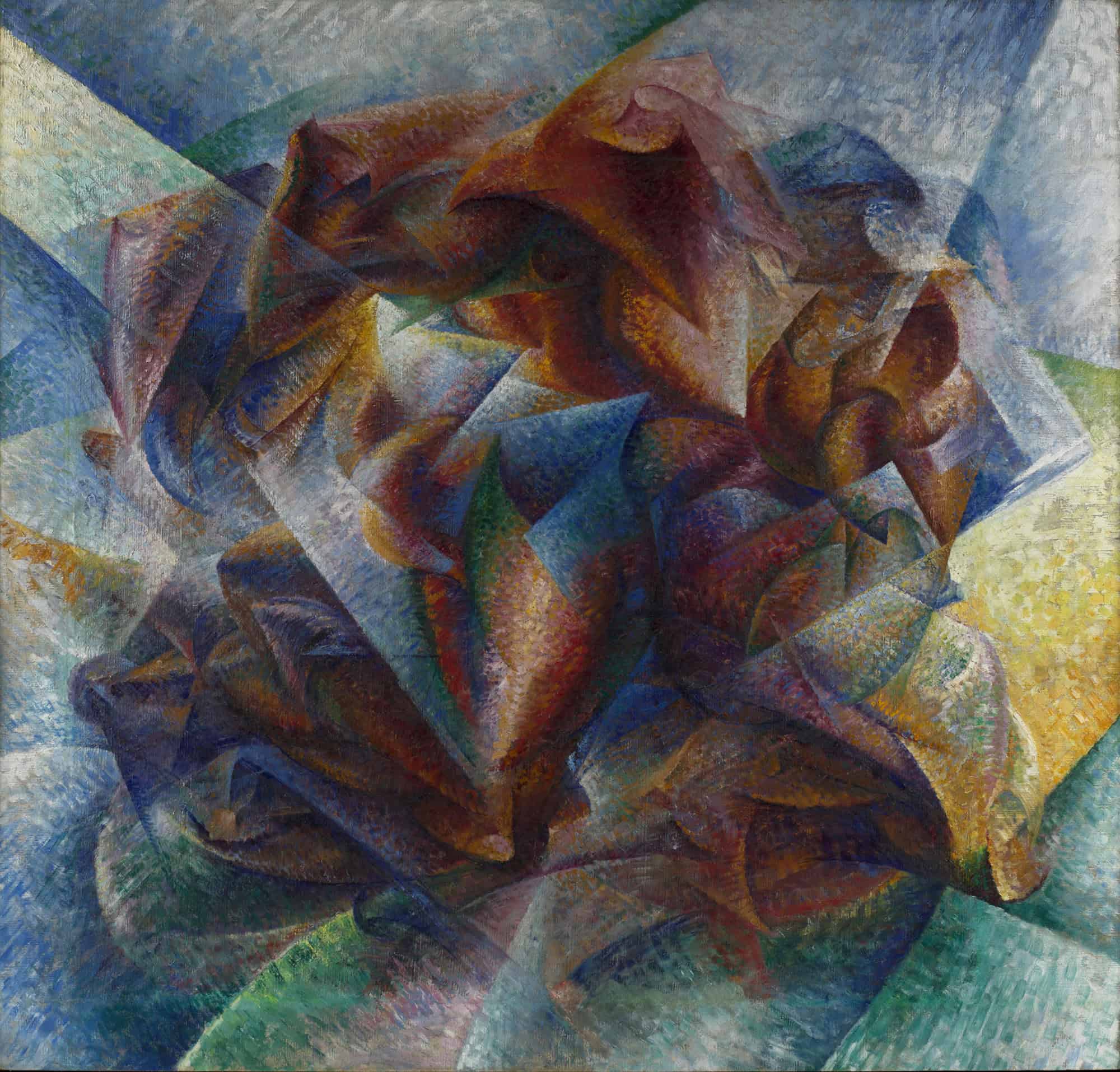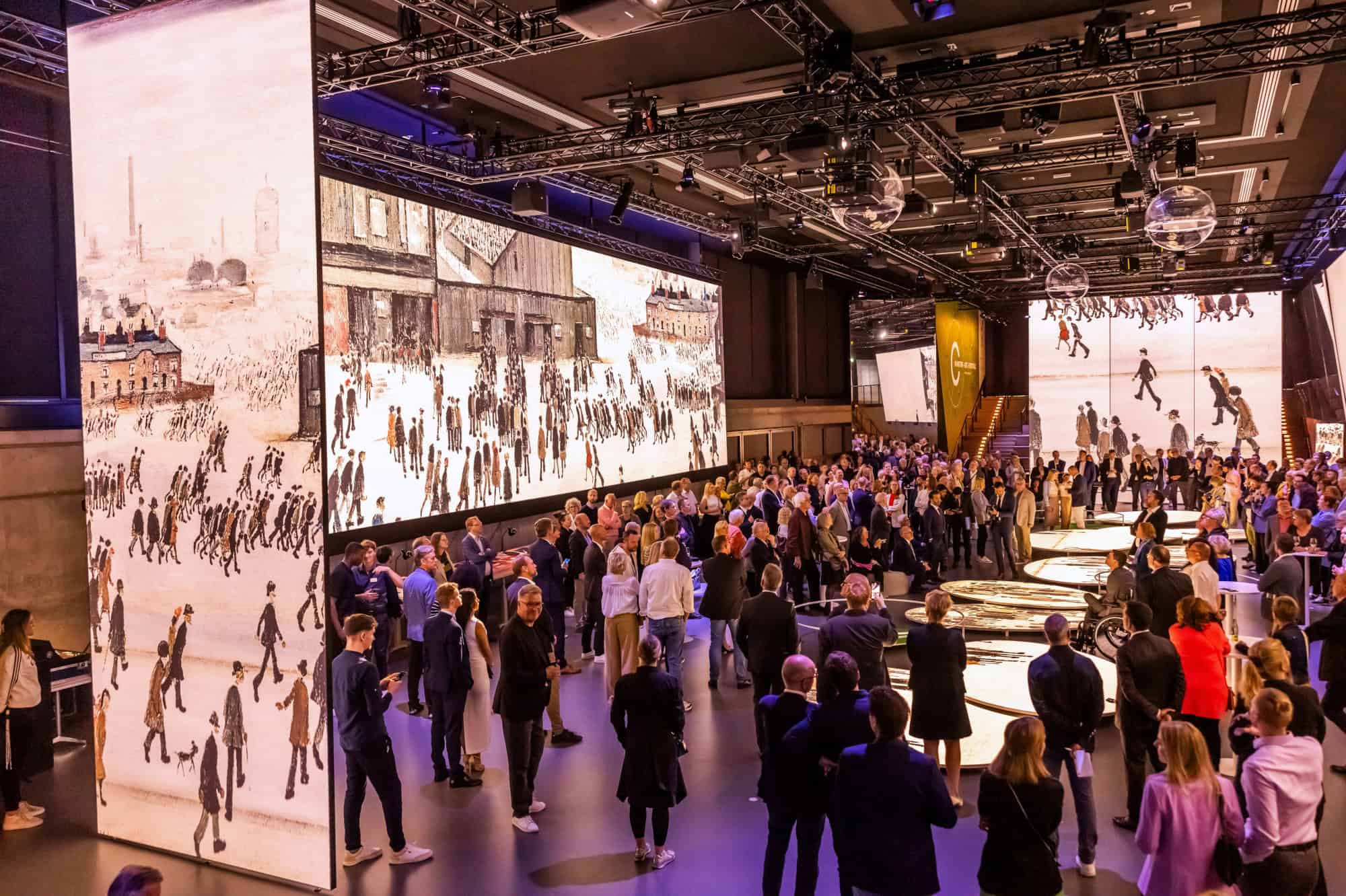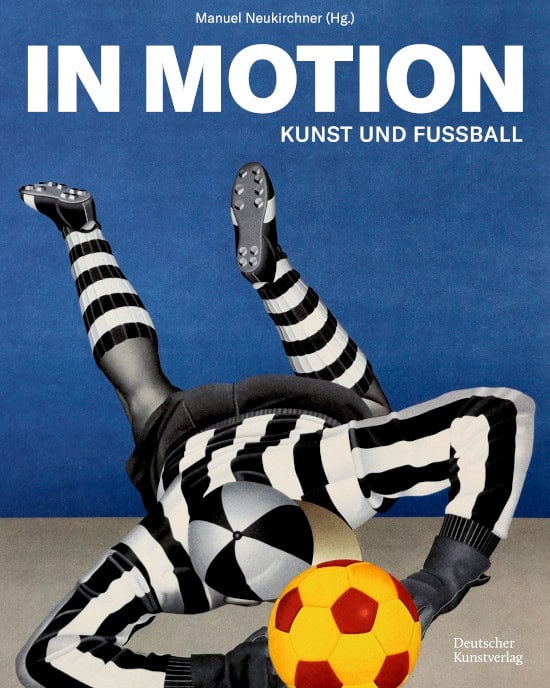In Motion: An Interview with Manuel Neukirchner
As EURO 2024 fever sweeps through Germany's cities and stadia, the host nation's pioneering Football Museum displays a spectacular overview of football in European modern art, representing a diverse continent united by the beautiful game. We spoke to curator Manuel Neukirchner about the exhibition and its catalogue, published by Deutscher Kunstverlag.
In a kaleidoscopic rush of colors and vectors, Umberto Boccioni’s Dynamism of a Soccer Player (1913) depicts an athlete at one with the atmosphere of a sporting spectacle. Delicately stippled oils describe a body in constant motion, dissolving into a moment that absorbs both past and future. We recognize the enigma of modern football where, for 90 minutes at a time, athlete and audience are rearranged into a totalizing atmosphere that extends from the pitch to millions of television screens around the world. Where “movement and light destroy the materiality of bodies,” as the Italian artist once wrote in his Technical Manifesto of Futurist Painting (1910).
In Motion: Art and Football was recently published in English and German by Deutscher Kunstverlag, an imprint of De Gruyter Brill.
One of 175 works currently on display in a large-scale virtual exhibition at the Deutsches Fußballmuseum (German Football Museum) in Dortmund, Boccioni’s painting reminds us that the beautiful game is also a mysterious one. On the occasion of the 17th UEFA European Football Championship, In Motion: Art and Football seeks to embrace the captivating mystique of the game and looks to painting as a way of getting closer to it. With its aesthetics, dynamics, rites and contradictions, football inspires artists and reveals surprising perspectives and possibilities. As the tournament’s knockout stages unfold, Deutscher Kunstverlag’s Kevin Schneider and Jennifer Harris spoke to Manuel Neukirchner, founding director of the Football Museum, about his role in organizing the exhibition and editing the accompanying catalogue.
Deutscher Kunstverlag: Can you tell us about your history with the Deutsches Fußballmuseum?
Manuel Neukirchner: In the summer of 2006, Germany showed the world its best side as host of the 18th FIFA World Cup. A relaxed and exuberant mood swept the country, with 20 million people in the fan zones and three million match-going spectators transforming the tournament into the much-cited ‘summer fairytale.’
Inspired by the cultural diversity and the buoyant atmosphere that infused the country that summer, the German Football Association (DFB) resolved to put a longstanding plan into action – the establishment of a national museum that would give the past and present of German football a permanent public cultural space. After nearly five years of construction, a new 7,700m² center for German football culture came into being on a prime site in Dortmund, a vibrant cultural hub and the heart of the Ruhr metropolis. The German Football Museum opened its doors in October 2015 and is now one of the most popular, most visited and financially most successful experience-based museums in the country.

DKV: What sparked the idea for this exhibition and book?
MN: In the past, thematic art exhibitions on football and sports in general have been held at a wide variety of places, not infrequently in connection with major national or international sporting competitions. In this sense, Germany’s hosting of EURO 2024 was the initial inspiration. But until now, football in art has never been seen from the transnational European perspective of painting, independent of a specific era or art movement. The German Football Museum is presenting for the first time a comprehensive selection of European artworks about football.
DKV: Is there a specific artwork in the book that is particularly meaningful to you?
MN: Going to the Match by the British painter L.S. Lowry reminds me of my own childhood, walking with my father into Stadion an der Hafenstraße, which is the home of Rot-Weiss Essen. The setting is almost the same. And so too are the emotions I feel when I look at this picture.
DKV: What significance does art have for football and vice versa?
MN: European champions interpret and present football with color and form, and in this process they find themselves on the trail of the game’s mystery. But the reverse is also true: Football, with its aesthetic and dynamic, its rites and contradictions, inspires artists, opening up new, surprising perspectives and artistic possibilities. It results in an impressive interplay between worlds. Paul Klee, Maria Lassnig, Willi Baumeister, Felix Nussbaum, L.S. Lowry, Robert Delaunay, Pablo Picasso, Salvador Dalí, Joan Miró, Umberto Boccioni, Kazimir Malevich, El Lissitzky, Varvara Stepanova and Alekxandr Deineka, to name just a few, all give football a form of artistic expression; they step out onto a shared playing field, and that playing field is called football.

DKV: Where do you see the similarities between making art and playing or watching football?
MN: Football is fruitful for the creative process, and there is an interplay in which artworks reveal the essence of the game. From an unusual point of view, observers experience what football is, what football offers: The beauty of the game just as much as its disruptive development in changing times. The audience will encounter different stylistic movements and aggregate states of art in the modern era. Expressionism, Cubism, Futurism, Constructivism, Surrealism and New Objectivity can be experienced in and through a dialogue with the fascinating subject of football. It also works in reverse: From the perspective of modern painting, we can decode this fascinating and contradictory sport as a multifaceted European phenomenon.
“Art narrates football. It deciphers it, finding the special moment that contains both past and future.”
DKV: What makes this book unique?
MN: The exhibition In Motion: Art and Football and accompanying catalogue are the German Football Museum’s cultural contribution to this year’s European Championship, which Germany hosts for the second time, following 1988. The exhibition and art project offers a radiant cross section of 20th-century artistic modernism dedicated to the theme of football. It is intended for a broad national and international audience as a prelude to the tournament, during the final round and as a postlude to 51 matches in ten stadiums.
The concept was proposed by the European Championship itself and underscores the basic idea of a diverse but united Europe: Each of the nations participating in the Euros is represented by at least one artist. Diversity has been a curatorial guideline: Diversity of nations; diversity of artists, some with transnational identities; diversity of approaches to art and to football; diversity of stylistic movements and eras. The idea of mirroring art and sport continues in the dialogue between different target audiences and their complementary insights. United by Football, the motto of EURO 2024, thus takes on a double meaning in the exhibition program.
DKV: What has been your favorite part of the process of creating this book?
MN: The gain of knowledge. Modern artists have made an important contribution to the monumental cosmos of reflections on the football. Painting expands the possibilities of experiencing the game and everything connected with this fascinating object: its laws, its secrets, its contradictions, its aesthetic, its rawness, its disruptive changes, and what it means to people.
Art narrates football. It deciphers it, finding the special moment that contains both past and future. Modern painting sets out in search of clues. It touches on the big questions: the origins of the pitch and the rules, the unpredictability of foot and ball, the contingency of the game, the scenes of boundless emotions, the overloading of total media illumination. Why do millions worldwide – on the smallest clay courts, on playing fields, in backyards or in big arenas – succumb to the spectacle? Art provides answers.
DKV: In light of the ongoing European Championship, what football image would you like to see turned into an artwork and who would paint it?
MN: A portrait of Jamal Musiala dribbling the ball. Umberto Boccioni would have taken much pleasure in those incredible dynamics.
Learn more in this related title from Deutscher Kunstverlag
Erfahren Sie mehr in diesem Buch
[Title image: Guri Madhi, Watching Football Game, 1986 © Pandi Guri Madhi, Tirana 2024. From In Motion. Art and Football]





